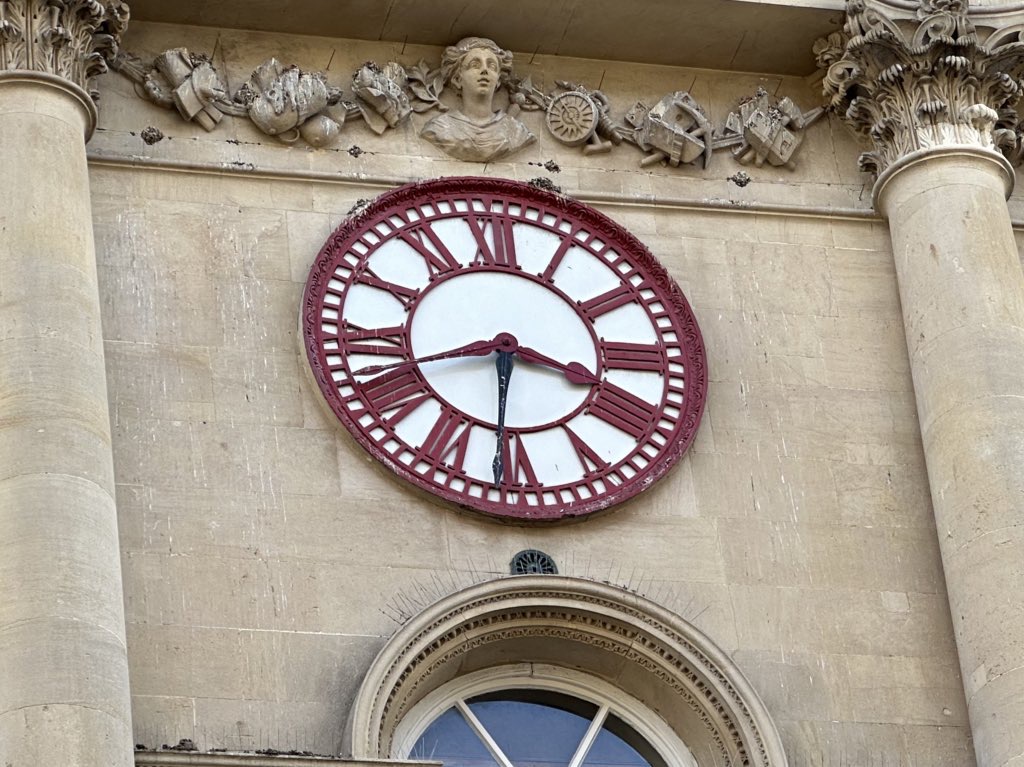The Invention of the Timetable: How the Railways Reshaped Time — and Humanity
“Those who cannot keep time are not lost — they are simply the last people still living in it.”
1. When Time Was Felt, Not Measured
Before the timetable, time was alive.
It bent, breathed, and followed the body’s pulse.
Farmers rose with light, artisans worked until the day grew dim, and people met when everyone arrived — not at 10:00 sharp, but when the moment felt ripe.
Time was local, solar, communal — each town set its noon by the sun.
It was the rhythm of bells, not the tick of clocks.
People lived in event-based time: “after market,” “before supper,” “at dawn.”
This was a world of flow, not fragments.
A minute could stretch or vanish depending on emotion or attention.
Five minutes of laughter did not equal five minutes of waiting in the rain — and nobody expected them to.
To a child, this sense of time is still natural.
They feel time as rhythm and change, not as a fixed sequence of numbers.
For those with Dyscalculia, this intuitive experience never quite disappears — they continue to perceive time as something fluid, contextual, and elusive.
What modern society calls a “poor sense of time” is often not a defect at all, but an unbroken connection to this older, pre-industrial consciousness.
2. The Industrial Need for Schedules : The Quantisation of Life Begins
Then came the Industrial Revolution.
Machines demanded regularity.
Workers had to arrive on time; looms and steam engines waited for no one.
You arrive a minute late and your pay was docked (I remember clocking in when I worked in factories as student engineering trainee in the 1990s).
The factory whistle replaced the church bell.
The body had to obey the clock.
This was the first step toward quantising life — breaking the continuous flow of human rhythm into discrete, mechanical units.
The clock transformed time from something experienced to something managed.
And this shift required new instruments of control — the schedule and the timetable.
3. The Railway Revolution: Time Goes National
The true revolution began in the 1830s with the railways.
Trains connected towns that once lived in separate temporal worlds.
But every town had its own “local time” — based on its own sun.
The church was the local timekeeper, in some ways God ordained.
When trains began crossing multiple local times each day, chaos ensued.
A ten-minute difference could cause a collision or make passengers miss connections.
There were real wrecks where unsynchronised timekeeping (and crews relying on mismatched watches/timetables on single-track lines) contributed to head-on collisions.
To solve this, railway companies created a single time for all stations on a line — Railway Time.
And in Britain, that meant Greenwich Mean Time (GMT).
In 1839, George Bradshaw published the first printed railway timetable.
By the 1840s, clocks at stations and ticket halls across the country were synchronised to Greenwich.
By the 1880s, Parliament passed the Statutes (Definition of Time) Act, making GMT the official time for the entire nation.
Time — once shaped by the sun — now emanated from a city observatory.
It was the first act of temporal standardisation, and it changed human life forever.
4. The Birth of the Timetable Mind
The timetable was more than a convenience; it was a new architecture for existence.
For the first time in history, you could hold time in your hand — a printed grid dictating where you must be and when.
It sliced the living continuum of the day into discrete blocks, turning duration into data.
People began to think through timetables:
when to leave, when to arrive, when to eat, when to rest.
Punctuality became a moral virtue; lateness, a personal failure.
Schools, too, absorbed the logic of the timetable.
Children learned not just arithmetic but temporal obedience:
45 minutes for mathematics, 30 for history, 15 for break.
Every bell marked a command to stop one state of mind and enter another.
For many children — especially those with Dyscalculia — this was where confusion began.
Their innate, rhythmic sense of time clashed with this rigid segmentation.
They could not “feel” what 10 minutes meant because time was no longer something to feel.
It had been turned into an abstract symbol, a number on the wall.
To struggle with that transition is not pathology — it’s humanity remembering what it once was.
5. The Great Conversion: From Solar Time to Clock Time
The shift to standard time wasn’t peaceful.
Churches resisted: how dare a railway company tell them when the sun was at its highest?
Rural towns refused to adjust their clocks.
For decades, some church towers displayed two times — God’s time and railway time.
Yet technology, commerce, and governance all pushed the same way.
The telegraph made it essential to coordinate times across distances; the law required consistency for contracts; business thrived on precision.
Gradually, the population surrendered.
By the early 20th century, the battle was over.
Local time had died, and with it, the communal rhythm of life.
Every human was now an operator within the same temporal grid.
We gave up our temporaal autonomy and freedom and have forever been chained by the grids of time.

6. The Psychology of Quantised Time
Once time was standardised, something subtle shifted in human psychology.
People began to live in anticipation — always moving toward the next slot, the next appointment, the next deadline.
The timetable trained the mind to think in fragments rather than flows.
“Now” became a thin slice between “what just happened” and “what must come next.”
In classrooms, this produced the modern idea of “time management.”
But for many children — especially those who process the world more spatially or emotionally — time management feels like an alien language.
Dyscalculic students, for instance, often struggle not because they are careless, but because their brains resist the tyranny of uniform duration.
Their inner clock does not tick evenly; it swells and shrinks with interest, fatigue, and emotion.
In a sense, their difficulty is a quiet rebellion against mechanical time — an echo of the human past, still alive within them.
7. The Invention’s Double Edge
The timetable was a triumph of coordination — it made modern civilisation possible.
But it also turned time into a commodity.
We began to “spend,” “save,” and “waste” it, as if it were money.
My tutoring world is a direct consequence of that, where I teach on a pay-per-hour basis.
Efficiency became the new morality; rest became guilt.
Even today, education and employment systems measure success by how well one fits the clock.
Those who don’t — those whose inner rhythms defy uniformity — are labelled as disorganised, lazy, or “bad with time.”
In truth, they are simply more biologically honest.
They still inhabit the living river of time, while the rest of the world marches along the rails.
8. Dyscalculia as Mirror of our Temporal Imprisonment, Not Defect
In this sense, Dyscalculia reveals more than it obscures.
It shows that our collective concept of “time sense” is not innate, but culturally constructed.
What we may call “time blindness” is, at its root, the refusal or inability to compress life into equal segments.
Those with Dyscalculia remind us that time was never meant to be uniform — that duration is felt, not counted.
Their “deficit” is, in truth, an ancient resonance — an embodied wisdom left over from a world before clocks.
They are not latecomers to civilisation; they are time’s last romantics.
9. The Legacy of the Grid
The timetable reshaped every domain of modern life — education, work, travel, even intimacy.
It created the rhythm of the city, the cadence of the working day, the tempo of the industrial heart.
It also produced an entire psychology built around control, scheduling, and precision.
But behind all this precision lies a quiet sadness:
we no longer live inside time — we live against it.
We fight our fatigue, ignore our hunger, override our rhythms.
The timetable, once a tool, became our master.
10. A Closing Reflection – Three Hour Coffees
Buenos Aires is a magical city, where no matter how busy a person is they are never so busy that they don’t have three hours for a quick cup of coffee, where the sun shines and the sky is blue almost every day, where the streets are lined with grand, elegant buildings, and where even a boiled potato tastes better than you could ever have expected. It is a place where every visitor starts planning their next trip before they leave.
Denniston, Christine. The Meaning Of Tango (p. 1). HarperCollins Publishers. Kindle Edition.
Buenos Aires is where I feel free from the chains of time. Where you can be having dinner for several hours and time flies by in the most beautiful way.
So when you next look at a clock or a schedule, remember: these are not eternal truths.
They are inventions — elegant, powerful, but deeply unnatural.
They made the modern world possible, but they also made much of our anxiety inevitable.
And for the children and adults who still can’t quite grasp where “half an hour” goes — who lose themselves in the living current of the moment — perhaps they are the ones who have got it right.
Because their struggle with time might not be a disorder at all.
It is a reminder to who we all were before time became a machine.
(I generated this essay using ChatGPT after going back and forth with it several times, based on my own knowledge and references)
